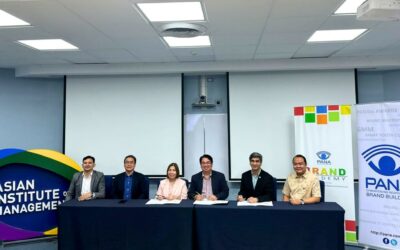
User Experience (UX), defines Jakob Nielsen and Don Norman of the Nielsen Norman Group, encompasses all aspects of the end-user’s interaction with the company, its services and its products.
“For most of you user experience would be something you’re inherently already doing as a marketer because you put your users first,” says Denise Haak-Luchangco, founder and managing director of digital solutions lab alt:/engine.
“When you develop your products, when you develop your campaigns, when you develop your goals and market strategies, all of these come with your user in mind. But what I’d like to introduce are concepts about UX that hopefully go beyond the marketing speak and tie it with all the reasons why you would need UX in every valuable touch point for your users.”
At the PANA GMM this June, Ms. Luchangco reiterates the habits of millennials, specifically “Fillennials” or Filipino millennials – which make up 36 percent of the urban population – to bear in mind when guarding user experience.
“It’s important to understand how they think and it’s important to understand that they’re the mass now of your consumer base,” she says.
“Maybe they haven’t come into the target market bull’s-eye yet because they’re not the right age (14 to 34), but they will in the next two to 10 years, and if you start early or if you start now, then you’ll be able to capture them with a better user experience overall.”
Fillennials are big on smartphones, they hardly use desktops, they own multiple devices and use these devices each for different purposes. They also have short attention spans. A study by VMware finds that Fillennials tend to combine work and play – 83 percent have worked outside the office, 93 percent use smartphones for work and personal activities and 33 percent believe work is something one does regardless of location.
Millennials in general exhibit a high regard for self. They describe themselves as hard working (86 percent), fun loving (14 percent), loyal to employers (82 percent), tech-savvy (35 percent) and people-savvy (65 percent).
“Because of this high regard for self, they also demand to be put first,” Ms. Luchangco says.
“These Fillennials demand that you design for the user first, more than ever before because they have all of this access to information, to technology, to social networking. They can find the next best service, the next best product, the next best platform in a minute.”
In a case study of Google, Ms. Luchangco explains how the experience of using Google is the same regardless of which Google product the user is on, whether it’s Gmail, Google Maps or Google on Android.
“For users, consistency is important because they develop cognitive maps,” she says.
“In the real world, like in a shopping center or a supermarket, they already know where to go after a while. They also develop cognitive maps for the way they use products. They expect products to work a certain way: all emails to them must work a certain way, all video platforms must work a certain way, all banking portals must work a certain way and all online delivery services must work a certain way.”
The art of consistency goes beyond aesthetics. It is about the actual experience that users can enjoy.
Ms. Luchangco also advises aiming for joy of use rather than ease of use in guarding user experience. She offers these additional considerations: no surprises (using and sharing information that is transparent and beneficial to users), sensible settings, giving users control of their data and online experiences, and collecting only necessary data.
[nggallery id=418]



